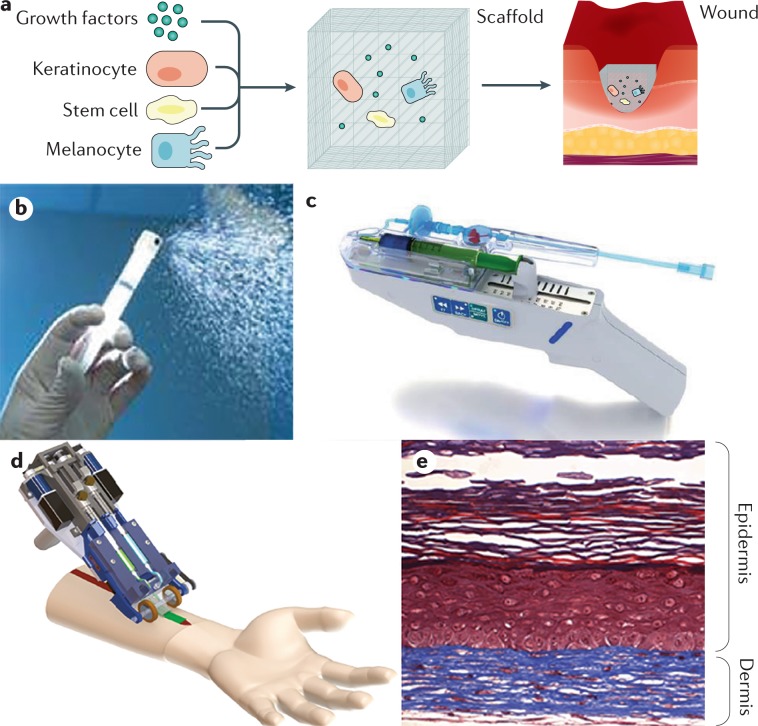Fig. 9. Skin substitutes.
Skin substitutes have undergone development over the past decade from temporary materials used to induce wound healing towards permanent tissue-engineered materials that offer definitive healing. This figures reflects a summary of some promising skin substitutes or treatments to induce wound regeneration. a | The common principle of skin substitutes is to the deliver proteins, growth factors and/or cells via a delivery vehicle or matrix that will then be integrated into the wound and form new autologous skin. b | ReCell is not a composite skin substitute, but a device that sprays a cell suspension of skin cells including epithelial cells, fibroblasts melanocytes and other resident cells onto the wound or grafted area to improve healing and scarring. c | The skin gun (RenovaCare) delivers autologous cells and/or stem cells to wounds to improve wound healing. Although this is a promising approach, no clinical trials or substantial evidence have been reported that indicate that the skin gun will enter the clinical arena. d | Recently, a hand-held device has been designed that can print 3D autologous skin248. This device is based on microfluidic technology and can deliver cells specifically and accurately in an ‘ink’, which serves as a matrix. e | A skin substitute using autologous cells from a healthy donor and a matrix shows self-assembly of dermal and epidermal structures. Although the ideal tissue-engineered skin derivative has not been described, this technology will change the way burn care is delivered and will improve acute and long-term outcomes. Image in part b courtesy of Avita Medical. Image in part c courtesy of RenovaCare Inc. Part d provided by A. Guenther (University of Toronto, Canada), and adapted with permission from ref.248, Royal Society of Chemistry. Panel e is reprinted from ref.267, CC BY 4.0 (https://creativecommons.org/licenses/by/4.0/).

